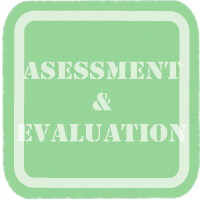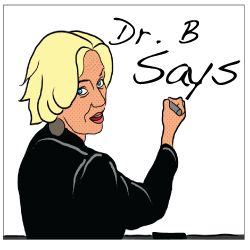 Student Self-Assessment
Student Self-Assessment
 Assessment is an important part of the learning process for both teachers and learners. When assessing students, teachers have many tools at their disposal. Teachers are not limited, however, to doing the assessment on their own. Students can participate in this process in many ways; student assessment can take the form of self-assessment and peer assessment and both of those can take different forms and serve a variety of purposes. In this section, we will explore how these assessment techniques can be used and the different forms they may take.
Assessment is an important part of the learning process for both teachers and learners. When assessing students, teachers have many tools at their disposal. Teachers are not limited, however, to doing the assessment on their own. Students can participate in this process in many ways; student assessment can take the form of self-assessment and peer assessment and both of those can take different forms and serve a variety of purposes. In this section, we will explore how these assessment techniques can be used and the different forms they may take.
Click here for activity ideas for student self-assessment.
What is student-self assessment?
Student self-assessment describes the process in which each student evaluates his or her own progress or performance. This can take the form of “I can” statements, learner contracts, reflections, portfolio reviews, and recording oneself. Research has shown that using self-assessment with students can positively effect self-efficacy and intrinsic motivation levels in students (Rolheiser & Ross).
Let’s look at the example of “I can” statements:
“I can” statements are a type of self-assessment. At the end of a class, chapter, unit, theme, etc., students are asked to complete a certain number of “I can” statements that explain what they feel they are able to do. For example, after a grammar lesson on the past tense, some possible “I can” statements might be:
- I can recognize the past tense in written work
- I can conjugate the past tense with all the personal pronouns
- I can verbally express a sentence about something I did in the past tense
“I can” statements can be used by the teacher as a type of ‘exit slip’ at the end of a lesson; before students can leave the classroom, they must complete their “I can” statements and give them to the teacher. This process allows the teacher to review the statements made by all of the students, and see if the “I can” statements correspond with the lesson objectives of the teacher, or if there is a need for review, more practice, or a re-framing of the content. To learn more about effectiveness of "I Can" statements, read on.
“I can” statements are a part of the Common European Frame of Reference (CERF), now available for most languages taught in Canada. For more information on the CERF and assessment strategies, click the links below.
Council of Europre: Learning, Teaching & Assessment
Cambridge English: Language Assessment
Wikipedia: Common European Framework of Reference
How can student self and peer assessment be used?
Having students complete self assessments and peer assessments is a valuable process. With the assistance of the assessment methods mentioned above, students are able to evaluate their performance as well as that of their peers. Through this reflective process, students may become more aware of their own strengths and weaknesses in terms of familiarity with the content, their learning styles, and learning strategies. This also helps the teacher assess exactly where students feel their weaknesses and strengths lie, and therefore help the teacher to focus review work.
This type of assessment shouldn’t be included when calculating a student's mark; if the teacher practices triangulated assessment, then the results from conversations, observations and products will demonstrate the same results as those gathered from peer assessment.
Click here for activity ideas for student self-assessment.
How can we teach student self-assessment?
In this section we present a Four-Stage Model for Teaching Student Self-Evaluation (Rolheiser & Ross)
STAGE 1- Involve the students in deciding which criteria they are being evaluated on. Students appreciate being involved in the process and are also better equipped to complete the task.
STAGE 2- Ensure that students know the different levels of the evaluation criteria and that they know how to produce work at the highest criterion level. Creating examples of this as a group will help ensure minimal confusion.
STAGE 3- Help students focus their self-evaluations by giving feedback; provide examples of what their feedback could have looked like, being sure to praise the efforts they made.
STAGE 4- Help the students create plans of action to improve their performance. This should involve setting general or specific goals so that students have a definite direction in which to move. Learning strategies can also be discussed so as to support students in meeting these goals.

Student Self-Evaluation: What Research Says and What Practice Shows (Ross & Rolheiser)
http://www.cdl.org/resource-library/articles/self_eval.php


